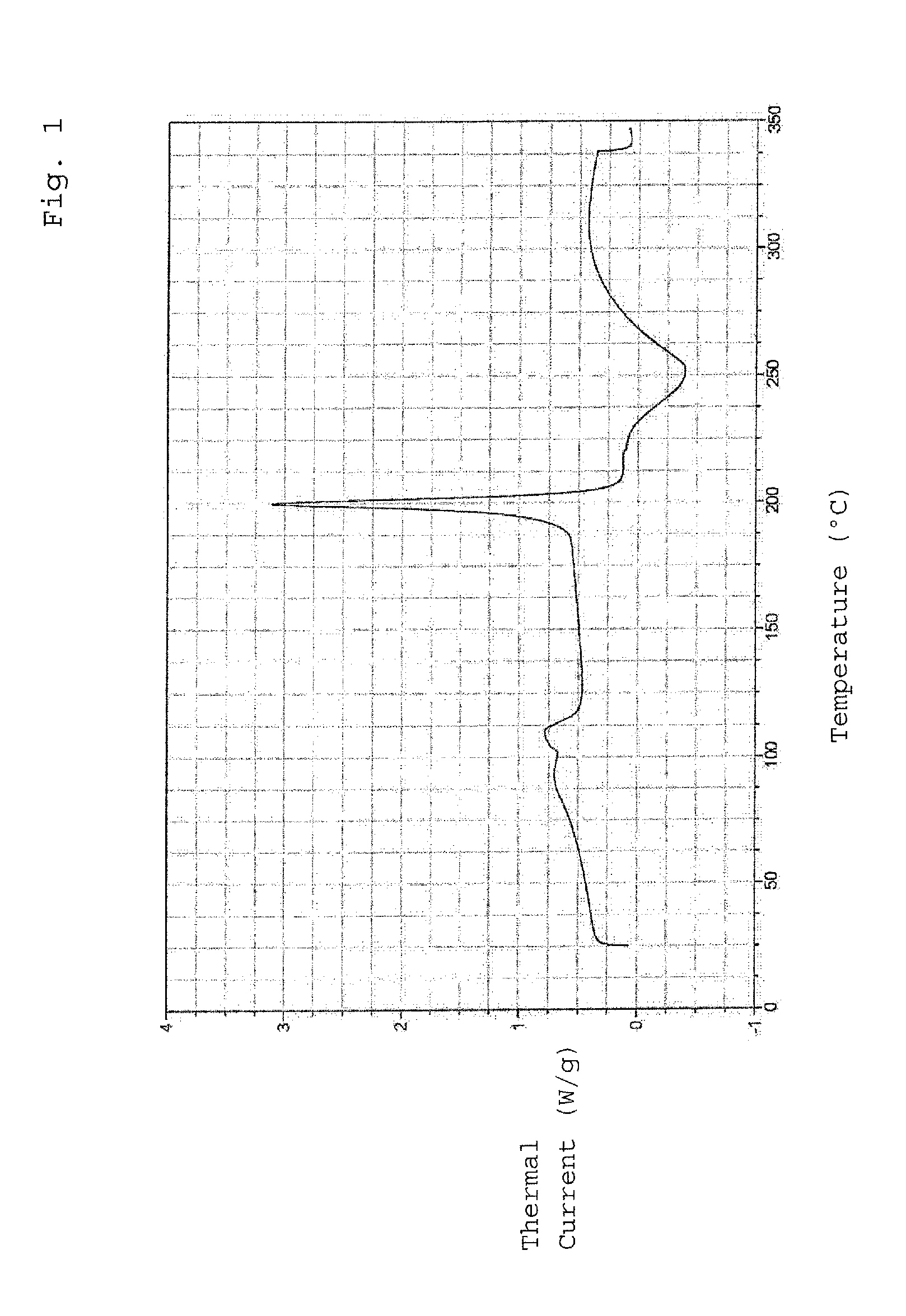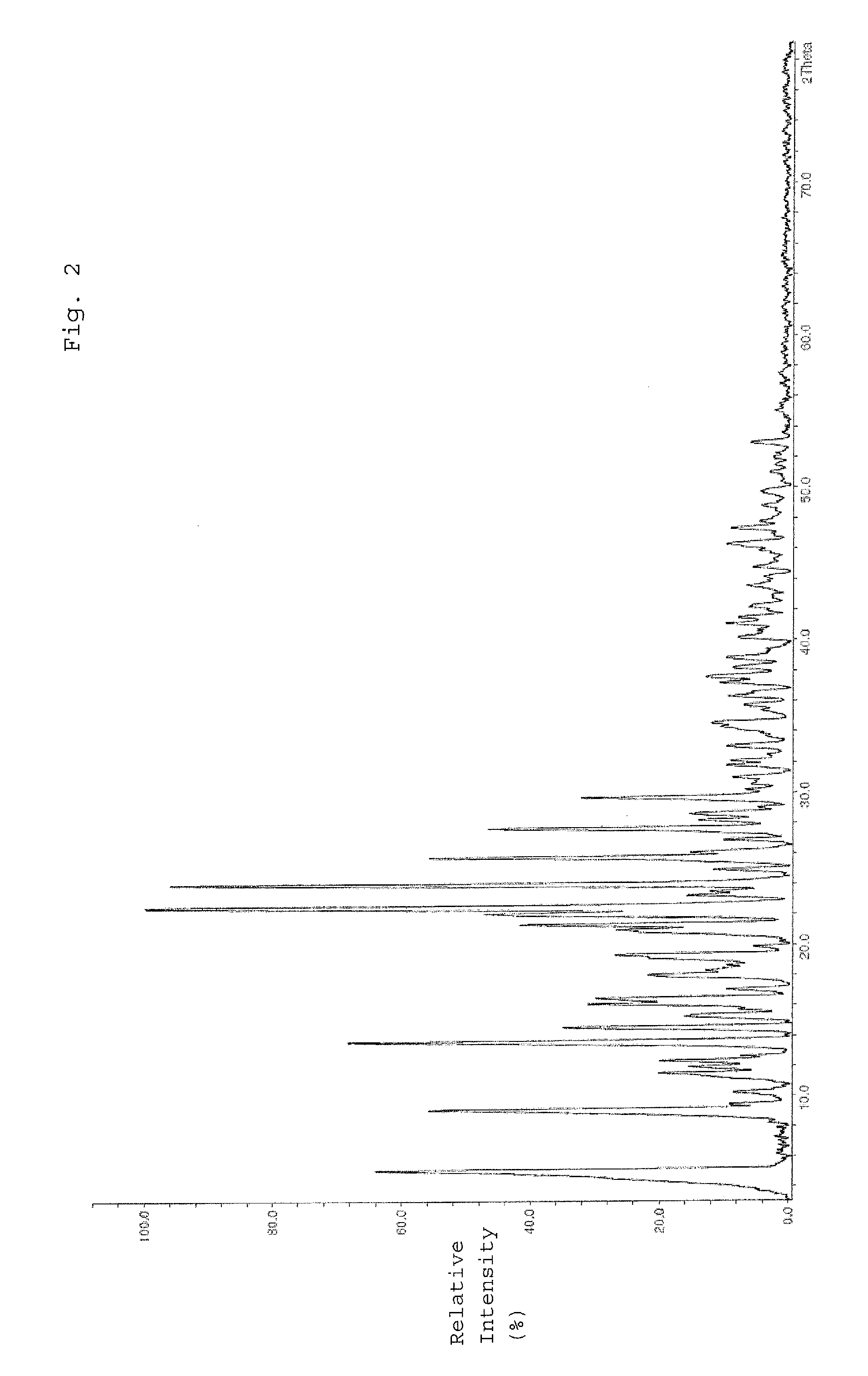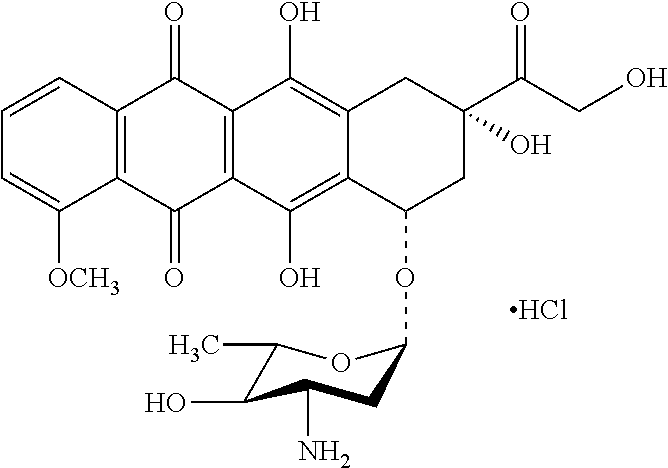Crystallization of epirubicin hydrochloride
a technology of epirubicin and hydrochloride, which is applied in the field of crystallization of epirubicin hydrochloride, can solve the problems of undetectable formation of dimers and decomposition products, and the inability to obtain crystallized epirubicin hydrochloride with the described x-ray diffraction pattern under the specified conditions, and achieves simple and reliable results. high purity
- Summary
- Abstract
- Description
- Claims
- Application Information
AI Technical Summary
Benefits of technology
Problems solved by technology
Method used
Image
Examples
example 1
[0060]9.0 g amorphous epirubicin hydrochloride was suspended in a mixture of 12 ml water, 258 ml 2-propanol, and 30 ml 1-butanol. This suspension was heated to 65° C. while stirring and left at this temperature for four hours. Here, the solid contained in the suspension was not completely dissolved, but instead was gradually converted from an amorphous modification into a crystalline modification. The suspension was cooled stepwise to a temperature of 22° C. After the removal of the solvent contained in the suspension by filtration, the crystals were washed with acetone and dried for 24 hours under vacuum after the removal of acetone.
[0061]Then, the purity of the resulting epirubicin hydrochloride was tested. The presence of dimers or decomposition products was not detected. The yield equaled 95%.
[0062]The produced crystalline epirubicin hydrochloride was subjected to a test of thermal stability. For this purpose, the produced crystals were stored at a temperature of 40° C. for a ti...
example 2
[0063]10.0 g amorphous epirubicin hydrochloride was dissolved in a mixture of 13 ml water and 13 ml 2-propanol, in order to prepare a solution containing epirubicin hydrochloride. This solution was then mixed with 33 ml 1-butanol and 274 ml 2-propanol. The produced mixture was heated to 65° C. and left at this temperature for four hours, whereby epirubicin hydrochloride crystals were formed. Then, the obtained suspension was cooled stepwise to a temperature of 22° C. The solvent contained in the suspension was removed by filtration, and the crystals remaining as filter residue were washed with acetone. After removing the acetone, the crystals were dried for 24 hours under vacuum.
[0064]Then, the purity of the produced epirubicin hydrochlorides was tested. The presence of dimers or decomposition products was not detected. The yield equaled 95%.
[0065]The produced crystalline epirubicin hydrochloride was subjected to a test of thermal stability. For this purpose, the produced crystals w...
PUM
| Property | Measurement | Unit |
|---|---|---|
| Temperature | aaaaa | aaaaa |
| Temperature | aaaaa | aaaaa |
| Temperature | aaaaa | aaaaa |
Abstract
Description
Claims
Application Information
 Login to View More
Login to View More - R&D
- Intellectual Property
- Life Sciences
- Materials
- Tech Scout
- Unparalleled Data Quality
- Higher Quality Content
- 60% Fewer Hallucinations
Browse by: Latest US Patents, China's latest patents, Technical Efficacy Thesaurus, Application Domain, Technology Topic, Popular Technical Reports.
© 2025 PatSnap. All rights reserved.Legal|Privacy policy|Modern Slavery Act Transparency Statement|Sitemap|About US| Contact US: help@patsnap.com



